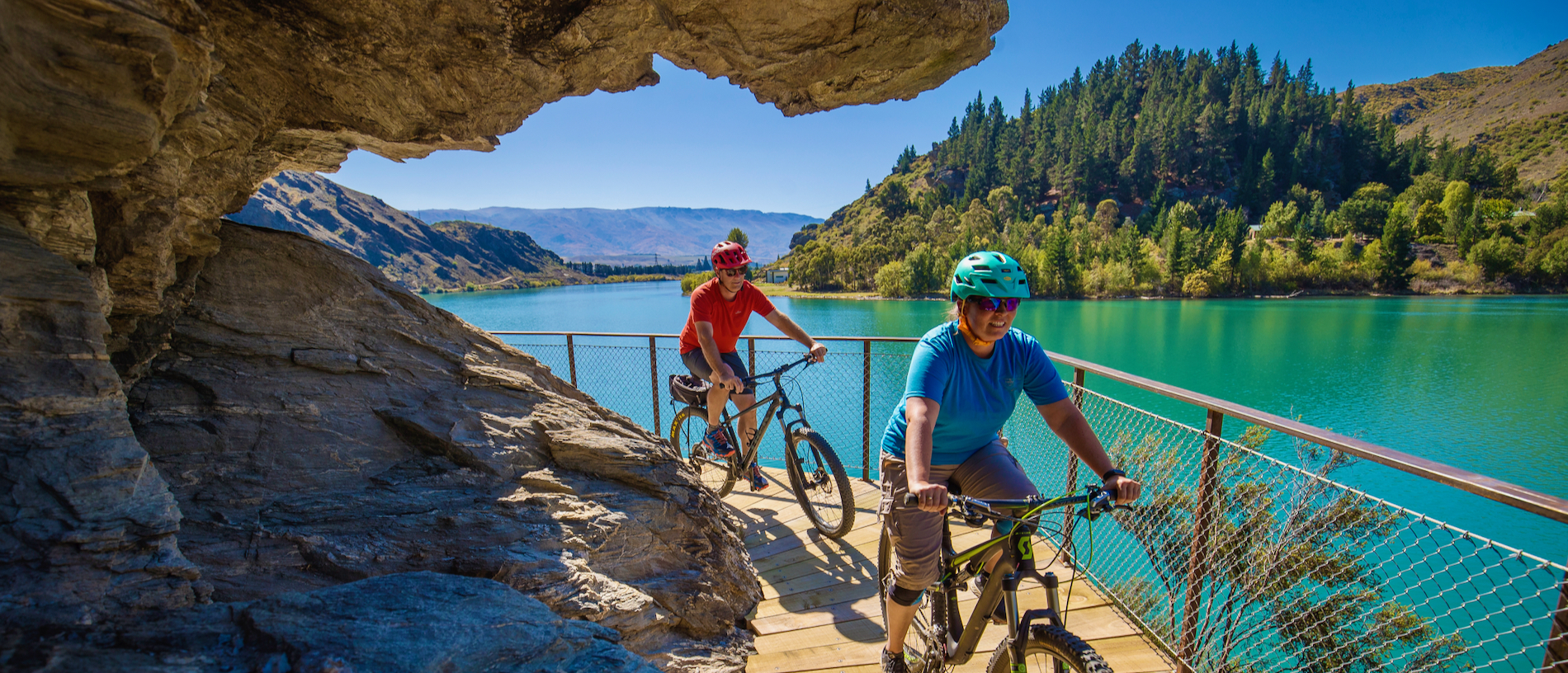
Ride the cycle trails of Central Otago
With wide open landscapes, gold mining heritage and winding rivers, Central Otago is a great spot for cycling.
If places had soundtracks you’d hear the cheesy score of a Spaghetti Western as you walk into the human-made badlands known as the Bannockburn Sluicings.
Located a short drive from Cromwell, the sculpted clay cliffs and pinnacles are the result of a five-decade-long gold mining era that began in the 1860s. They were formed by a mining technique known as hydraulic sluicing, which involved water being blasted at the hills to release alluvial gold.
This unique landscape can’t be experienced from a distance – you definitely have to walk or mountain bike it to fully appreciate it. A 15-minute trek gets you to the entrance of a little valley of caves, tunnels and rock tailings left untouched since it was abandoned by the last of the mining men. Keep an eye out for remnants of stone and earth houses, the blacksmith shop and caves and rock shelters where the poorest miners once lived.
To get the full experience, follow the well-signposted two-hour return track that takes you past the remains of Stewart Town.
This small settlement contains an old miner’s stone cottage, a dam and old water races that used to take precious water to the mining sites.
There’s even an orchard that yields pears and apricots in season, incredible when you consider that it was planted in 1906! Once you reach Menzies Terrace you’re rewarded with sweeping views across Cromwell and Bailey’s Gully.
Central Otago is famous for changing with the seasons and the Bannockburn Sluicings are no exception. Expect a spring-time profusion of wild thyme (introduced in the 1860s by a French gold miner affectionately known as “the Old Fraud”), distant snow-clad mountains in winter and great wine to taste at the nearby vineyards all year round!
The Bannockburn Sluicings are recognised as a Tohu Whenua, one of Aotearoa New Zealand’s best heritage experiences. The historic site is proudly cared for by the Department of Conservation Te Papa Atawhai.